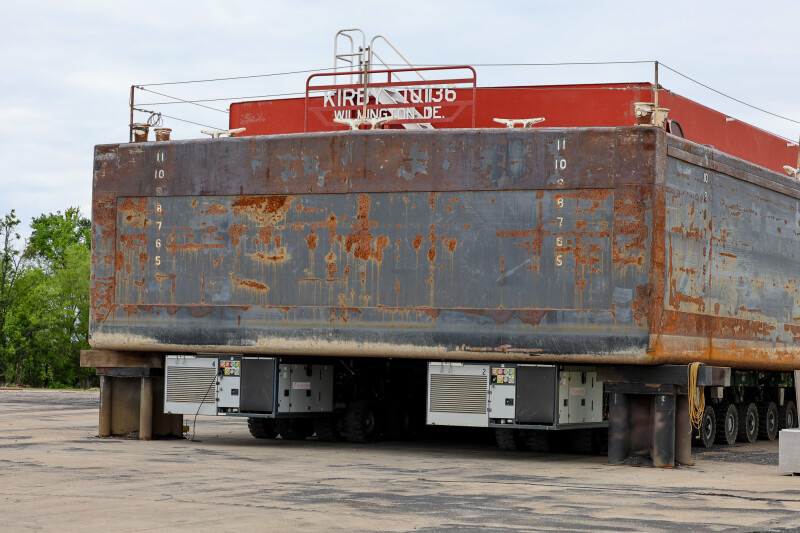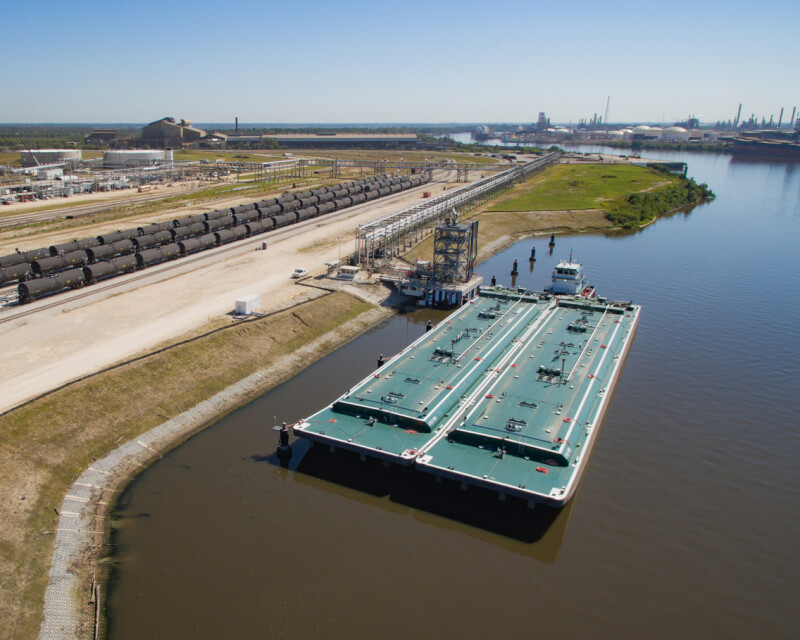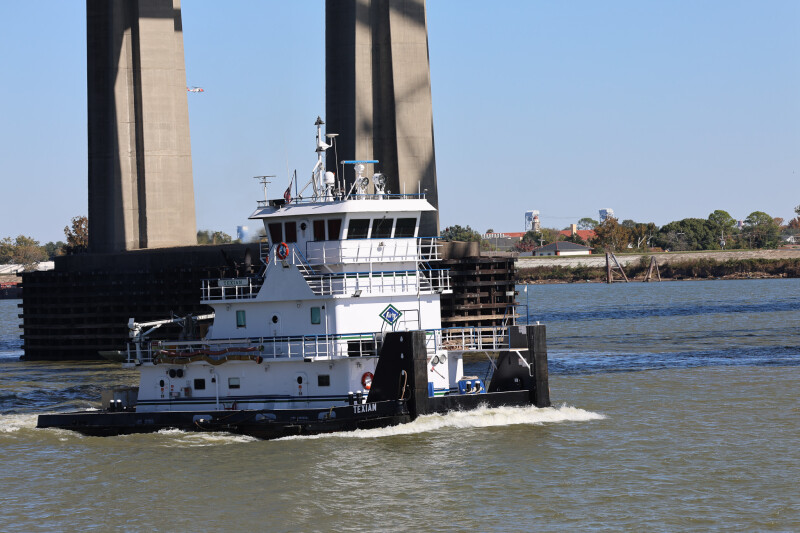For barge operators on America’s inland waterways system, there’s never a dull moment. The past 12 months have been no exception, with dangerously low and high water levels, lock delays and closures, and market fluctuations. These are just “normal headwinds,” Kirby Corp. CEO David Grzebinski said on Jan. 30, in the company’s earnings announcement for the full year and fourth quarter of 2024.
The U.S. barging sector — which carries 4% of the nation’s freight tonnage, according to the U.S. Department of Transportation — has long been adept at navigating these challenges, keeping the flow of petroleum, coal, farm products, and other commodities moving at a steady pace despite frequent curveballs thrown by Mother Nature and the economy.
Inland barge utilization and pricing have steadily increased since the historic lows of the Covid-19 pandemic, according to Kirby Corp., the leading operator of inland tank barges in the U.S.
The construction of new barges — including open and covered dry barges, as well as tank barges — has been increasing in recent years, though it remains below the long-term average due to the persistently high cost of building.

Additionally, a lack of available inland towing vessel tonnage, especially for newer and more powerful boats, indicates a tightening market, Marcon International, Inc., wrote in its December inland pushboat market report, which said 96 new U.S.-flagged towing vessels were registered in 2024.
“We anticipate positive market dynamics due to limited new barge construction. The demand softening we saw in the refinery sector in the fourth quarter is starting to improve and barge utilization rates are firming up,” said Grzebinski. “We expect our barge utilization rates to be in the low to mid-90% range for the year with continued improvement in term contract pricing as renewals occur throughout the year.”
Across the sector, utilization rates for inland barges remained high throughout 2024, according to the Marcon report. “Day rates have shown improvement, with spot market rates increasing in the high-single digit range year-over-year and term contract renewals seeing similar increases.”
Meanwhile, inflationary pressures, mariner shortages, and rising equipment costs continue to challenge the barging sector, as they do across the entire U.S. maritime industry.
The Marcon report warns that sweeping moves by the new administration — slashing agencies, canceling contracts and grants, and imposing tariffs on major trade partners — are stirring volatility that could upend 2024’s trends. Analysts say demand for inland transportation may take a hit, with utilization and day rates likely to follow.
Still, the outlook is positive.
“Overall, inland revenues are expected to grow in the mid- to high-single-digit range for the full year,” said Grzebinski. “As we usually see, normal seasonal winter weather has started and is expected to be a headwind to revenues and margins in the first quarter. However, we expect operating margins will gradually improve during the year.”

WRDA
Aging infrastructure has long plagued America’s inland waterways, hampering efficiency and competitiveness across the barge and maritime industries. But the sector notched a major win with the passage of the Thomas R. Carper Water Resources Development Act of 2024 (WRDA 2024) — a sweeping, bipartisan bill signed into law by President Biden on Jan. 4, 2025, after receiving overwhelming support in both chambers of Congress.
At the heart of the legislation is a permanent shift in how inland waterway construction and major rehabilitation projects are funded. The federal government will now cover 75% of these costs, up from 65%, while the Inland Waterways Trust Fund — supported by a diesel tax on the barge industry — will cover just 25%.
The change is expected to significantly expand the impact of the trust fund’s $115 million in annual revenue, unlocking as much as $460 million in federal infrastructure investment, an increase of $131 million above the previous 65%/35% formula, according to the Waterways Council Inc. Advocates said the industry can expect to see lower project costs, faster timelines, and long-overdue improvements to aging locks and dams.
WRDA 2024 also delivers a boost to U.S. ports by raising the depth thresholds for federally funded dredging. The Army Corps of Engineers can now fully fund maintenance dredging and 75% of construction dredging for projects up to 55' deep, allowing ports to accommodate larger vessels and remain globally competitive.
The law authorizes $10.7 billion for 21 new projects, including flood control in Louisiana and New York and Everglades restoration. It also continues a decade-long streak of bipartisan water resources bills, offering long-term stability for critical infrastructure planning.
“WRDA 2024 makes much needed reforms at the Corps of Engineers to streamline processes, reduce cumbersome red tape, and get projects done faster,” Rep. Sam Graves, R-Mo., chairman of the House Transportation and Infrastructure Committee, said in a statement in December.




